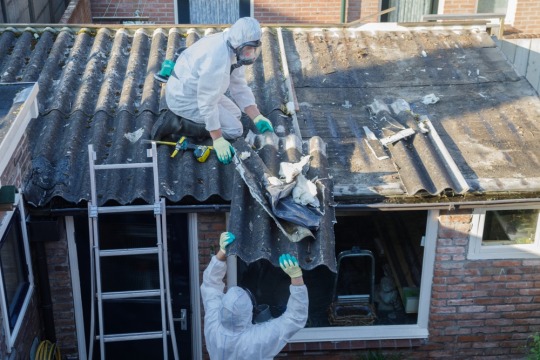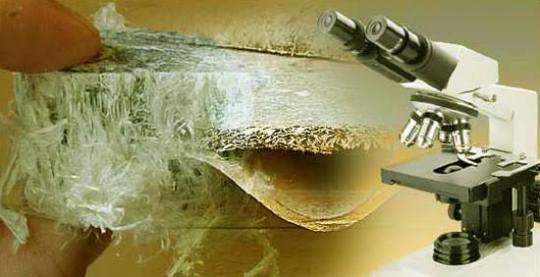Don't wanna be here? Send us removal request.
Text
What Is Asbestos Testing
Asbestos testing is a mineral composed of long, thin fibers that look at this now similar to fiberglass. This material has reinforcing qualities, heat resistance and soundproofing. Because of this, it was used to insulate pipes, ceiling and floor coverings, paints and coatings, caulking, fire-resistant fabrics and clothing and brake pads.
Asbestos is a mineral composed of long, thin fibers that look similar to fiberglass. This material has reinforcing qualities, heat resistance and soundproofing. Because of this, it was used to insulate pipes, ceiling and floor coverings, paints and coatings, caulking, fire-resistant fabrics and clothing and brake pads.

It is a health hazard in more than 840,000 homes, offices and schools. Exposure to asbestos over a long period of time can cause lung cancer. It is estimated that 20,000 people will die annually in the next 30 years due to exposure to asbestos. Here are some basic principles and how to test it to keep you and your loved ones safe.
The basic
If uncoated, asbestos testing can get wet and turn into oatmeal as a consistency. After asbestos has been painted, the water does not reach the fibers and therefore cannot be detected visually. Scraping and construction send asbestos particles into the air. Even covering the texture with a second layer of wall board, the fibers come loose.
All removal must be left to the professionals. There are now coatings that can improve the encapsulation of asbestos in walls and ceilings that are highly effective in sealing it. Of course, future renovations and construction can break the surface and still release asbestos fibers.

Testing
Domestic asbestos testing kits typically include two sample collectors and require a $ 15 laboratory analysis fee. Popcorn and textured ceilings, ceiling tiles, floors and pipe insulation must be checked. A simple-to-use laboratory test identifies asbestos fibers at as little as 1% content by weight, and is more sensitive than EPA guidelines using polarized light microscopy (PLM). Take the samples following the instructions in the test kit and send them to the laboratory. The results are returned within two weeks.
Asbestos is not something to be lightly. Knowing what to look for and test will keep you and your loved ones safe.
0 notes
Text
What Is Asbestos Testing And What Was It Used For?
Asbestos testing or asbestos is called a variety of six natural mineral fibers, extracted from rocks. According to the Directorate-General for Health (DGS), it was its properties (such as elasticity, fire resistance or good insulation) that led to it being widely used by the construction industry. Although its use and commercialization was banned in Portugal in 2005, it can still be found in various parts of public and private buildings, from fiber cement tiles, building coverings and roofs, plaster and stucco, false ceilings or insulation. These fibers also had the most varied domestic and industrial uses, from household appliances to the automotive sector.

Asbestos is carcinogenic. The risk essentially occurs when inhaling asbestos fibers that have been released into the air, and asbestos exposure is very often in a professional context. Microscopic fibers can “settle in the lungs and stay there for many years”, notes the DGS. The Working Conditions Authority (ACT) lists inhalation, ingestion and skin contact as the main routes of exposure. The diseases associated with contact with asbestos, which can appear several years or decades later, are: asbestosis, mesothelioma (which essentially affects the pleura and peritoneum), lung cancer and gastrointestinal cancer. The National Institute of Health Dr. Ricardo Jorge says that the World Health Organization (WHO) “has not found, to date,
Must it always be removed?
According to DGS, not necessarily. "As a general rule, the presence of asbestos testing in construction materials represents a low risk to health, as long as the material is in good condition, is not friable and is not subject to direct aggression", says the entity. For Zero, the best solution is always to safely remove the material: even if it does not show “wear or possible release of particles”, this “does not mean that it should not be removed”, since “the first visible signs of wear in a material they occur after the material has already released any particles into the environment that may have been inhaled by people ”.
ACT states that, after assessing the exposure limit value (VLE, defined by law), there are three options: remove, keep monitoring or encapsulate. Zero is against this last solution, since there may be wear and tear on the encapsulation material or a natural catastrophe leading to the release of fibers.
How should it be removed?
Asbestos, a substance that went from "magic mineral" to cursed
Even the Directorate-General for Health has a building with asbestos in Lisbon
After carrying out the VLE analyzes that determine the need for removal, an application must be sent to ACT requesting authorization for the start of work and having information such as the location, type and quantity of asbestos testing, the processes applied, the number of workers involved or preventive measures to limit workers' exposure to asbestos dust. During the work, air samples must be taken to ensure the proper execution of the work. When the operation is completed, a new assessment should take place, checking that the value does not exceed the concentration of 0.01 fiber per cubic centimeter, referred by WHO as an indicator of clean area.
1 note
·
View note